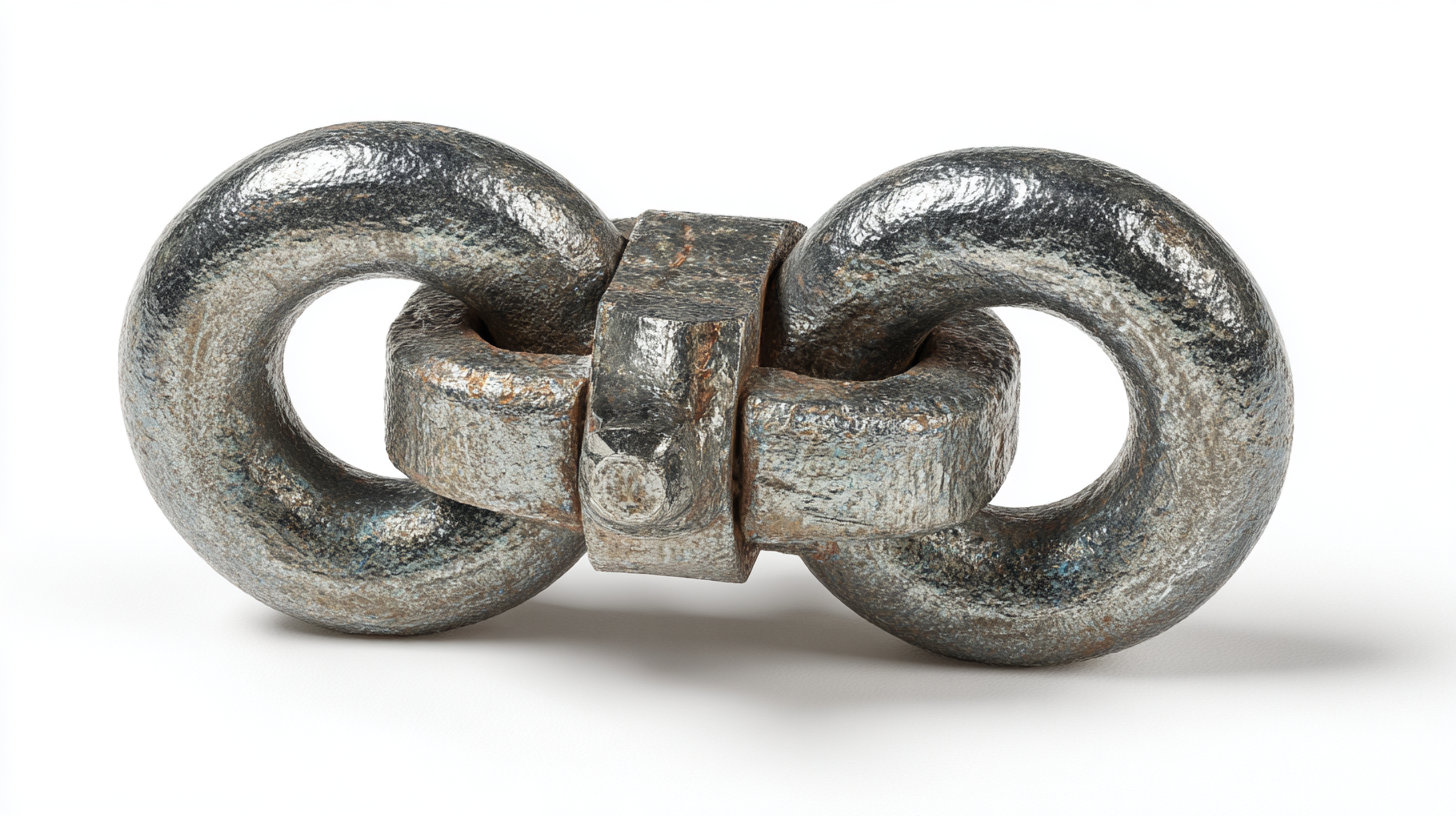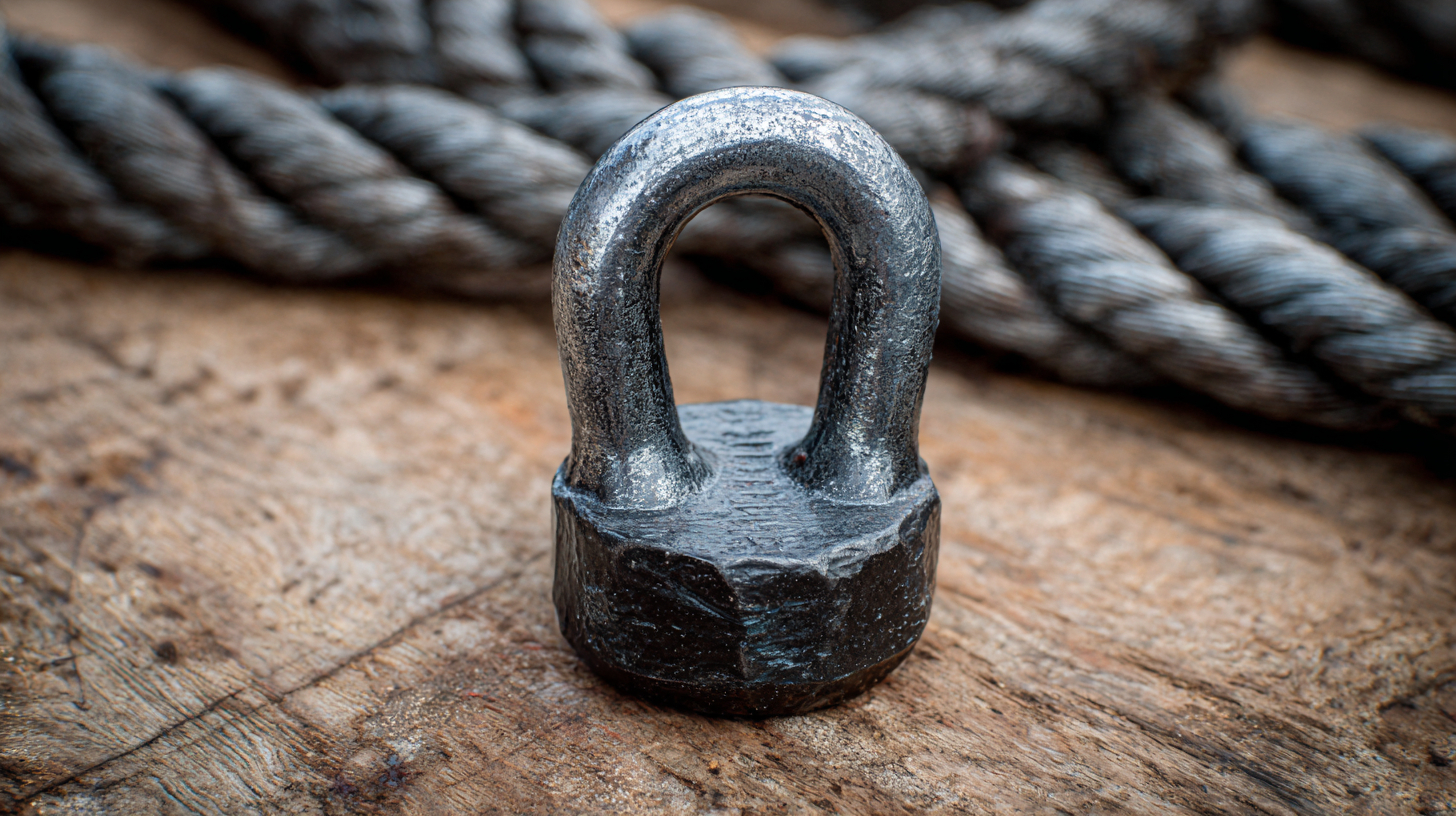In the vast and competitive realm of marine applications, the importance of selecting the highest quality Anchor Shackle cannot be overstated. As we witness the global shift, where products from China are making their mark on the world stage, the emphasis on quality as a driving force for success is more crucial than ever. This blog will explore the various solutions available for identifying the best Anchor Shackle that not only meets the technical specifications required for maritime operations but also embodies the craftsmanship and durability that international markets demand.

We will delve into factors such as material selection, load ratings, and design features, ensuring that your choice of Anchor Shackle not only enhances operational efficiency but also guarantees safety and reliability in marine environments.
Anchor shackles play a critical role in marine environments, serving as essential components for securing loads and connecting various rigging systems. According to a report by the American Bureau of Shipping, the incorrect use of anchor shackles can increase the risk of failure during operations, leading to accidents or equipment loss. With over 65% of marine accidents attributed to equipment failure, ensuring that the right anchor shackle is chosen for specific applications is vital for safety and efficiency.
When selecting anchor shackles, it's crucial to consider materials and loading capacities. Stainless steel shackles are preferred for their corrosion resistance in saltwater environments. A study from the Marine Safety Research Institute indicates that choosing the right material can extend the lifespan of the equipment by up to 50%. Additionally, working load limits should be adhered to strictly; experts recommend a safety factor of at least 5:1, especially in dynamic marine conditions.
Tips: Always inspect shackles for wear and tear before use, as even minor damage can lead to failure. Furthermore, ensure all shackles are compatible with the existing rigging systems, as improper coupling can compromise safety. Regular training for crew members on proper shackle usage can also help mitigate risks associated with marine operations.
When considering anchor shackles for marine applications, several key industries benefit significantly from their durability and strength. The shipping industry, for instance, relies heavily on robust shackles to secure cargo and ensure safety during transport.
 Construction companies that operate in marine environments also depend on heavy-duty anchor shackles for mooring equipment and stabilizing structures in challenging conditions. Additionally, commercial fishing operations use these shackles to secure nets and traps, ensuring their effectiveness and longevity.
Construction companies that operate in marine environments also depend on heavy-duty anchor shackles for mooring equipment and stabilizing structures in challenging conditions. Additionally, commercial fishing operations use these shackles to secure nets and traps, ensuring their effectiveness and longevity.
Tip: When selecting an anchor shackle, always opt for materials resistant to corrosion, such as stainless steel or galvanized steel, to enhance longevity in salty marine environments.
Furthermore, the oil and gas industry requires the highest quality anchor shackles for securing underwater equipment and drilling rigs. The need for reliability in extreme conditions makes choosing the right shackle critical for project success.
Tip: Always check the working load limit (WLL) of the shackle to ensure it meets the demands of your specific application, as exceeding this limit can lead to catastrophic failures.
When selecting the ideal anchor shackle for marine applications, there are key features to consider that can enhance safety and performance. First and foremost, the material of the shackle is crucial; marine-grade stainless steel and galvanized steel are top choices due to their corrosion resistance. According to a recent industry report, stainless steel shackles exhibit over 1000 hours of salt spray resistance, making them an excellent investment for longevity in harsh marine environments.
Another essential feature is the design of the pin. A screw pin shackle is often recommended as it provides superior security compared to a standard pin. Research indicates that screw pin shackles reduce the risk of accidental release significantly, thus enhancing safety on board. Additionally, look for features like a load rating that exceeds your maximum expected load by at least 25%—this safety margin is supported by guidelines from the American Boat and Yacht Council (ABYC).
Tip: Always check the certification of the shackle you're considering, as verified shackles not only ensure quality but also compliance with industry standards. This not only secures your equipment but also provides peace of mind during marine operations. Prioritizing these characteristics will lead to a more reliable and effective anchoring solution.
When selecting anchor shackles for marine applications, it's crucial to conduct a thorough comparative analysis between traditional and innovative options. Traditional anchor shackles, often made from stainless steel or galvanized materials, have long been favored for their durability and strength. According to a report by MarineInsight, conventional stainless steel shackles can withstand loads ranging from 4,000 to 20,000 pounds, making them suitable for various anchoring tasks, especially in recreational boating. However, they can be prone to corrosion and fatigue over time, particularly in saltwater environments.
Innovative anchor shackles have emerged to address these limitations, often utilizing advanced materials such as high-strength polymers or corrosion-resistant alloys. These modern shackles boast impressive performance metrics, with some designs offering up to 30% lighter weight without compromising load capacity. A recent study in the Journal of Marine Engineering highlighted that innovative shackles could endure similar load capacities while significantly reducing wear and tear, thereby enhancing longevity and safety. This evolution in design not only improves functionality but also aligns with sustainability goals in the marine industry, as many new materials are designed with recyclability in mind.
| Feature | Traditional Anchor Shackles | Innovative Anchor Shackles |
|---|---|---|
| Material | Mild Steel or Stainless Steel | High-Strength Alloys or Composite Materials |
| Weight | Heavier, less maneuverable | Lighter, more maneuverable |
| Corrosion Resistance | Moderate | High, often with protective coatings |
| Load Capacity | Standard ratings available | Enhanced ratings with testing |
| Safety Features | Basic safety design | Advanced features such as locking mechanisms |
| Price Range | Affordable | Higher initial investment but proven durability |
In the world of marine projects, anchor shackles play a crucial role in ensuring safety and stability during operations. Their reliable performance has been demonstrated in various success stories across different applications. For instance, one notable project involved a deep-sea oil drilling operation where the robustness of anchor shackles was tested under extreme conditions. The shackles not only withstood the intense underwater pressure but also maintained their integrity, allowing for successful drilling with minimal downtime.
Another inspiring example comes from the realm of marine construction, where a team was tasked with erecting a floating bridge. The use of high-quality anchor shackles enabled them to secure the structure against strong currents and adverse weather. With the shackles providing unwavering support, the project was completed ahead of schedule, showcasing how essential these components are in heavy marine applications. These real-world examples illustrate that choosing the right anchor shackle can significantly impact the efficiency and safety of a project, leading to positive outcomes that resonate throughout the industry.

